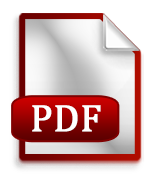In today’s digital landscape, the seamless ability to “edit PDF online” has become a valuable asset for businesses and individuals alike. Behind this capability lies a harmonious interplay of hardware, infrastructure, and design. This article delves into the intricacies of how these foundational elements collectively enable the user-friendly and efficient online editing of PDF documents.
Contents
A. The Crucial Role of Hardware, Infrastructure, and Design
In the ever-evolving world of technology, the synergy between hardware, infrastructure, and design plays a pivotal role in shaping the digital experiences we encounter daily. This synergy is particularly evident in the realm of online PDF editing, where the quality of the hardware, the robustness of the infrastructure, and the thoughtfulness of design collectively determine the success of an “edit PDF online” platform.

B. The Interplay of Technology and Innovation
Innovation in the digital space thrives on the foundation of cutting-edge technology. Hardware advancements drive the performance and capabilities of digital platforms, while infrastructure design ensures the reliability and scalability of services. Coupled with intuitive design principles, this interplay results in user-friendly and efficient solutions.
C. Why It Matters: Harnessing the Power of “Edit PDF Online”
The ability to “edit PDF online” has revolutionized document management, offering convenience, accessibility, and collaboration. Whether for personal use, business operations, or creative endeavors, the quality of the underlying hardware, infrastructure, and design significantly influences the effectiveness of online PDF editing.
II. The Foundation: Hardware
A. Hardware Components
1. Central Processing Unit (CPU)
The CPU is the brain of any hardware setup. Its processing power directly impacts the speed and responsiveness of online PDF editing platforms. High-performance CPUs enable swift rendering of PDF documents, ensuring a smooth editing experience.
2. Random Access Memory (RAM)
RAM is the workspace where applications and data are temporarily stored for quick access. Ample RAM ensures that “edit PDF online” platforms can efficiently handle large PDF files and complex editing tasks without slowdowns or crashes.
3. Storage Devices
Fast and reliable storage devices, such as Solid State Drives (SSDs), reduce loading times and enhance data retrieval. They play a crucial role in storing and accessing PDF documents for online editing.
B. Hardware Infrastructure
1. Servers and Data Centers
Behind every “edit PDF online” service are powerful servers and data centers. These infrastructure components host PDF files, handle user requests, and facilitate real-time collaboration. Redundant server configurations ensure uptime and data redundancy.
2. Networking Equipment
High-speed networking equipment, including routers, switches, and load balancers, guarantee seamless communication between users and the platform. Low-latency connections are essential for responsive online PDF editing.
3. Scalability and Redundancy
Scalable hardware infrastructure allows platforms to grow and accommodate increasing user demands. Redundancy ensures uninterrupted service even in the event of hardware failures, offering reliability to users.
III. The Backbone: Infrastructure
A. Infrastructure Elements
1. Cloud Computing
Cloud-based infrastructure provides flexibility and accessibility for “edit PDF online” services. Users can access their documents from any device with an internet connection, while cloud providers manage data storage and server resources.
2. Data Storage Solutions
Effective data storage solutions, such as distributed file systems and databases, enable secure and efficient storage and retrieval of PDF files. Data management and backup strategies are essential to ensure data integrity.
3. Network Security
Robust network security measures protect user data, prevent unauthorized access, and ensure the confidentiality of edited PDFs. Secure transmission protocols and encryption protocols are integral components.
B. Infrastructure Design
1. Redundancy and Failover
Infrastructure design incorporates redundancy and failover mechanisms to maintain service availability. Multiple data centers, load balancing, and automated failover processes minimize downtime.
2. Scalability and Elasticity
The ability to scale infrastructure resources dynamically allows “edit PDF online” platforms to accommodate fluctuations in user activity and document editing demands. Elasticity ensures optimal resource allocation.
3. Disaster Recovery Planning
Contingency planning for unforeseen events, such as data breaches or natural disasters, ensures data recovery and continuity of service. Backup strategies and disaster recovery protocols are integral components of infrastructure design.
IV. The Face of Innovation: Design
A. Design Principles
1. User-Centered Design
User-centered design principles prioritize the needs and preferences of end-users. An intuitive and user-friendly interface is paramount in ensuring a positive experience for those who “edit PDF online.”
2. Accessibility and Inclusivity
Designing for accessibility ensures that online PDF editing platforms are usable by individuals with diverse abilities. Inclusive design accommodates all users, fostering accessibility and usability.
3. Aesthetics and Branding
Aesthetics play a role in brand recognition and user engagement. Thoughtful design choices, including color schemes, typography, and visual elements, contribute to the overall appeal of “edit PDF online” platforms.
B. Design Tools and Software
1. Graphic Design Software
Graphic design tools enable the creation of visually appealing elements, such as icons, logos, and user interface elements. These tools contribute to the overall aesthetics of online PDF editing platforms.
2. User Interface (UI) and User Experience (UX) Design Tools
UI and UX design tools assist in crafting user-friendly interfaces. Wireframing, prototyping, and usability testing are integral parts of the design process to optimize the user experience.
3. Collaboration Platforms
Design teams often collaborate on online PDF editing platform projects. Collaboration platforms facilitate seamless communication and version control, ensuring design consistency across the platform.
V. Synergy in Action: How “Edit PDF Online” Benefits from Hardware, Infrastructure, and Design
A. Hardware’s Role
1. Processing PDFs Efficiently
High-performance hardware ensures quick rendering and manipulation of PDF documents, enhancing the speed and responsiveness of online editing.
2. Quick Response Times
Well-configured hardware guarantees fast response times, allowing users to edit PDFs without frustrating delays, regardless of file size or complexity.
3. Reliable Performance
Robust hardware components reduce the risk of crashes and system failures, providing users with a reliable online PDF editing experience.
B. Infrastructure’s Impact
1. Seamless Online Editing
Infrastructure elements like cloud computing and data storage solutions enable seamless online editing from any device, fostering accessibility and collaboration.
2. Data Security and Accessibility
Secure infrastructure design safeguards user data while ensuring accessibility and availability of edited PDFs.
3. Scalability for Growing Needs
Scalable infrastructure allows “edit PDF online” platforms to accommodate increased user activity and document editing demands without compromising performance.
C. Design’s Influence
1. User-Friendly Interface
User-centered design principles create an intuitive interface that simplifies PDF editing, making it accessible to users of all skill levels.
2. Intuitive Editing Tools
Design choices enhance the user experience by providing intuitive editing tools that streamline the PDF editing process.
3. Consistent Branding and Aesthetics
Thoughtful design ensures consistent branding and aesthetics, reinforcing the platform’s identity and user engagement.
Conclusion
The power of “edit PDF online” lies not only in its functionality but also in the intricate synergy of hardware, infrastructure, and design. These foundational elements collectively create a seamless and efficient user experience, allowing individuals and businesses to harness the full potential of online PDF editing. Understanding and appreciating the role of these components empowers us to make informed choices and leverage this transformative technology for our digital needs.



